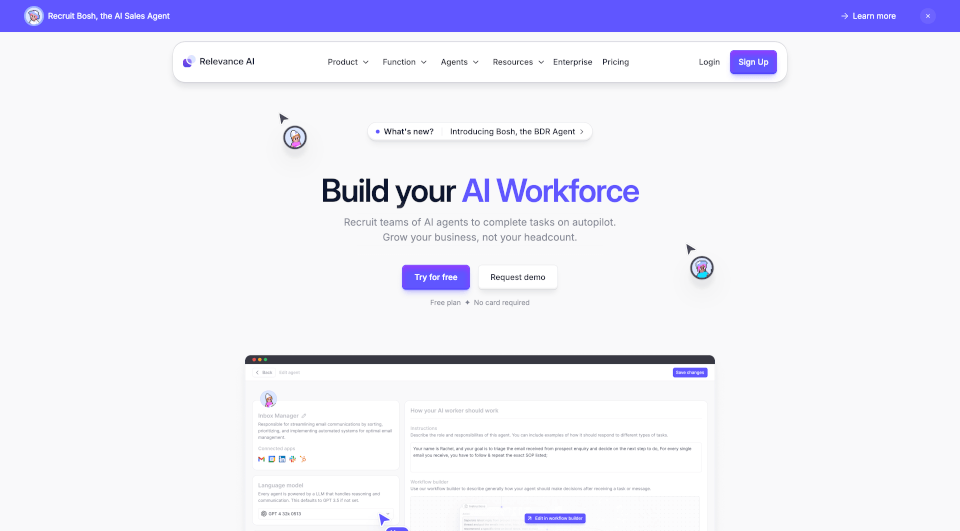What is Flyte?
Flyte is an infinitely scalable and flexible workflow orchestration platform designed to streamline the creation, execution, and management of data and machine learning (ML) workflows. By seamlessly unifying data, ML, and analytics stacks, Flyte enables data teams to work efficiently, minimizing complexities associated with deployment and scaling. With a robust architecture that focuses on reliability and ease of use, Flyte empowers data scientists and practitioners to build production-grade workflows without the hassle typically associated with traditional systems.
What are the features of Flyte?
1. Scalability
Flyte is built for scalability, allowing users to expand their workflows and optimize resource allocation as needed. It automatically adjusts to the growing demands of data processing, ensuring that workflows run smoothly without the need for constant monitoring.
2. Workflow Flexibility
Flyte offers users the ability to create highly flexible data and ML workflows. With the use of a Python SDK, data practitioners can design workflows that address specific project needs, incorporate reusable components, and easily deploy them to a Flyte backend.
3. Comprehensive Data Lineage
Track the health of your data and ML workflows at every stage of execution. Flyte provides detailed insights into data lineage, allowing users to pinpoint the source of errors quickly and effectively.
4. Dynamic Resource Allocation
Resource allocation doesn’t require complicated infrastructure overhauls. Users can fine-tune resources at runtime, enhancing workflow performance without compromising underlying infrastructure.
5. Integration Capabilities
Flyte smoothly integrates with existing tools and services that teams already use. This platform-level and SDK-level integration simplifies the incorporation of Flyte into diverse data and ML workflows.
6. Monitoring and Notifications
Stay informed with Flyte’s monitoring capabilities that send notifications via Slack, email, or PagerDuty directly to your team. This feature ensures that stakeholders remain informed about workflow executions and potential issues.
7. Easy Debugging and Iteration
With Flyte’s focus on rapid experimentation, data practitioners can debug and iterate on workflows locally before deploying them to production. This approach helps achieve tighter feedback loops, speeding up the development process.
8. Visual Data Representation
FlyteDeck enables users to visualize data and render insightful plots directly within the workflows. This feature aids in better decision-making based on data-driven insights.
What are the characteristics of Flyte?
- User-Centric Design: Flyte is designed with the end user in mind, allowing data scientists and ML practitioners to take charge of their workflows without always relying on engineering teams.
- Open Source: As an open-source platform, Flyte provides transparency and community support, making it easier for organizations to adopt and adapt the solution.
- Low Maintenance Overhead: Once set up, Flyte requires minimal ongoing maintenance, allowing teams to focus on developing workflows rather than managing infrastructure.
- Robustness: Designed to handle the complexities and scaling needs of modern data processing and ML tasks, Flyte ensures high performance and reliability.
What are the use cases of Flyte?
- Data Processing Pipelines: Flyte can be employed to automate the extraction, transformation, and loading (ETL) of data, allowing organizations to build robust data pipelines seamlessly.
- Machine Learning Model Training: Data scientists can leverage Flyte to develop and train models on large datasets while managing hyperparameters efficiently through well-defined workflows.
- Predictive Analytics: Flyte enables analytics teams to implement complex models and obtain valuable insights from data, driving better business decisions.
- Collaborative Research: In research environments, Flyte can facilitate collaboration across teams, allowing researchers to share workflows and components easily, thereby accelerating innovation.
- Real-time Data Applications: With its dynamic resource allocation and scalability, Flyte is well-suited for applications that require processing real-time data, ensuring that resources are optimally utilized.
How to use Flyte?
To get started with Flyte, users can install the platform locally or use the hosted option provided by Union.ai. The intuitive Python SDK allows users to write their data and ML workflows effortlessly. Key steps include:
- Install Flyte SDK: Set up Flyte SDK in your Python environment.
- Define Workflows: Use the SDK to define your ETL or ML workflows using specific tasks.
- Testing and Debugging: Test and debug workflows locally for initial validation.
- Deploy to Production: Once workflows are validated, deploy them to the Flyte platform for production use.
- Monitor Execution: Utilize Flyte’s monitoring tools to oversee workflow execution and receive notifications as needed.








